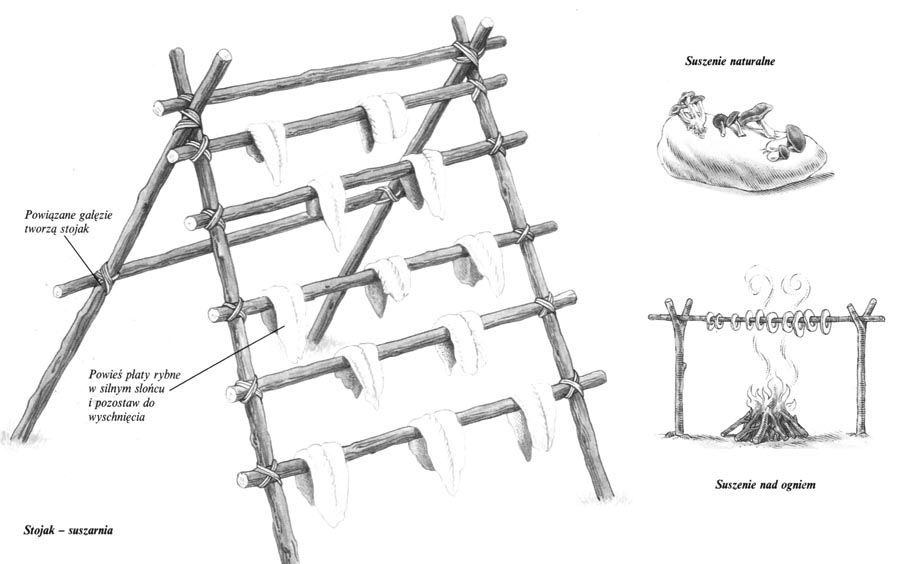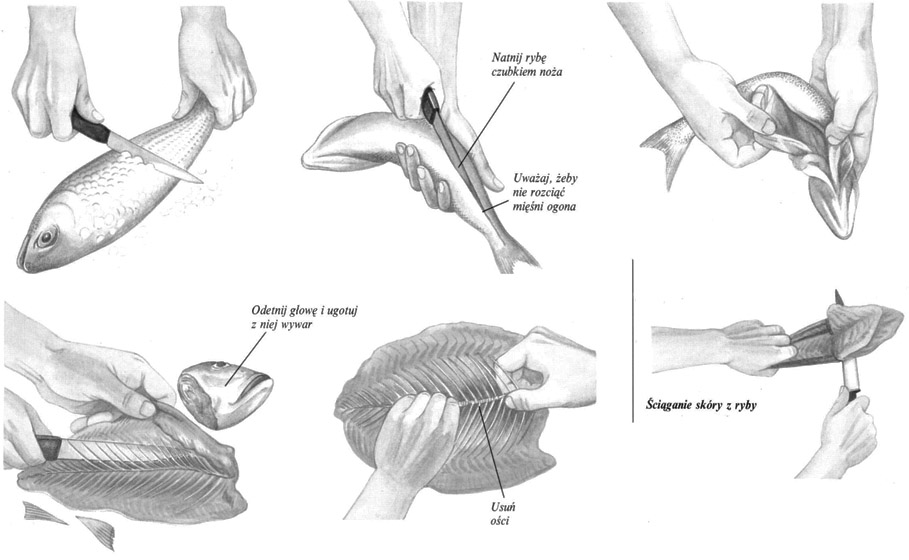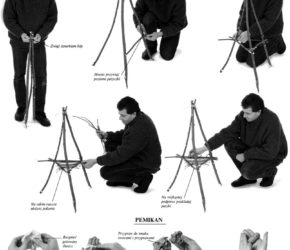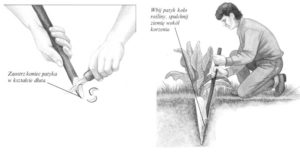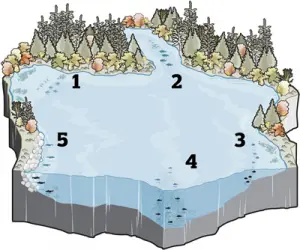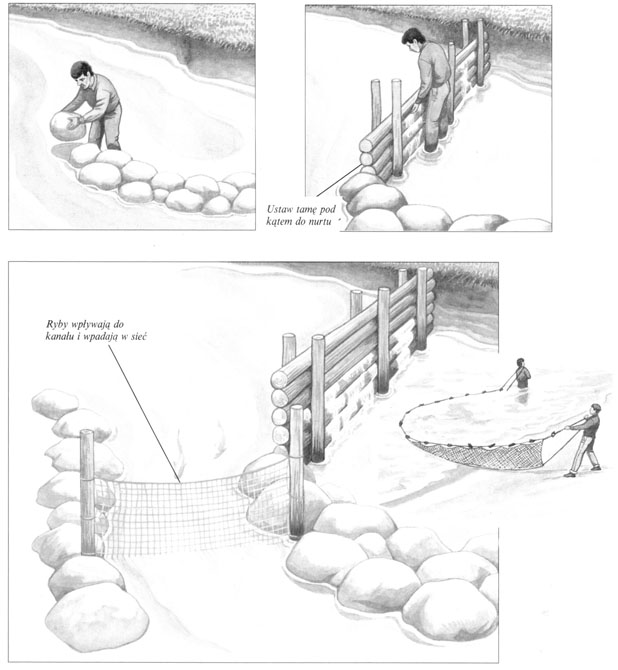Każdy produkt wkrótce po zebraniu zaczyna się psuć. Bez lodówki mięso i ryby nie nadają się do użytku już następnego dnia po zabiciu, a rośliny też szybko tracą swoje wartości odżywcze. Gdy przyjdzie Ci długo mieszkać w warunkach polowych, musisz nauczyć się zbierać dużo jedzenia i go konserwować. Będziesz mógł takie produkty wykorzystać, gdy skończy się obfitość zbieranego pożywienia, a utrzymanie właściwie urozmaiconej diety będzie trudne. W każdym wypadku, jeżeli planujesz dłuższy pobyt poza domem, zacznij jak najprędzej robić przetwory i zapasy, a gotowe konserwy zachowaj naprawdę na czarną godzinę.
Filety z ryb można suszyć rozwieszone w słońcu na specjalnej konstrukcji z powiązanych gałęzi. Suszarnię trzeba zrobić przed złowieniem ryb. Po zabiciu natychmiast trzeba je sprawić. Tylko mocne słońce wysuszy ryby, zanim się zepsują. Ustaw suszarnię w stronę wiatru, który będzie przeganiał muchy. Na poziomych żerdkach niezbyt gęsto rozwieś filety. Mięso będzie suche, gdy wyparuje z niego cała woda, powinno więc być półprzezroczyste. Suszone filety przechowuje się lub miele na mączkę, którą zagęszcza się zupy lub dodaje do surowych konserw.
INNE SPOSOBY SUSZENIA
Suszenie naturalne – W ciepłym, suchym klimacie możesz ułożyć grzyby czy rośliny na kamieniach i pozostawić do wyschnięcia. Zioła wiesza się w pęczkach główkami do dołu.
Suszenie nad ogniem
Owoce kroi się w plasterki, nabija na patyk i wiesza nad ogniskiem. Uważaj, aby ogień nie był silny, bo wówczas owoce ugotują się.
NATURALNE ŚRODKI KONSERWUJĄCE
Jedzenie można konserwować naturalnymi substancjami. Ryby natrzyj solą, warzywa skrop sokiem z cytryny, albo ugotuj jedzenie w wodzie z konserwującymi przyprawami. Solone ryby można przechowywać w temperaturze nie wyższej niż 11°C.
